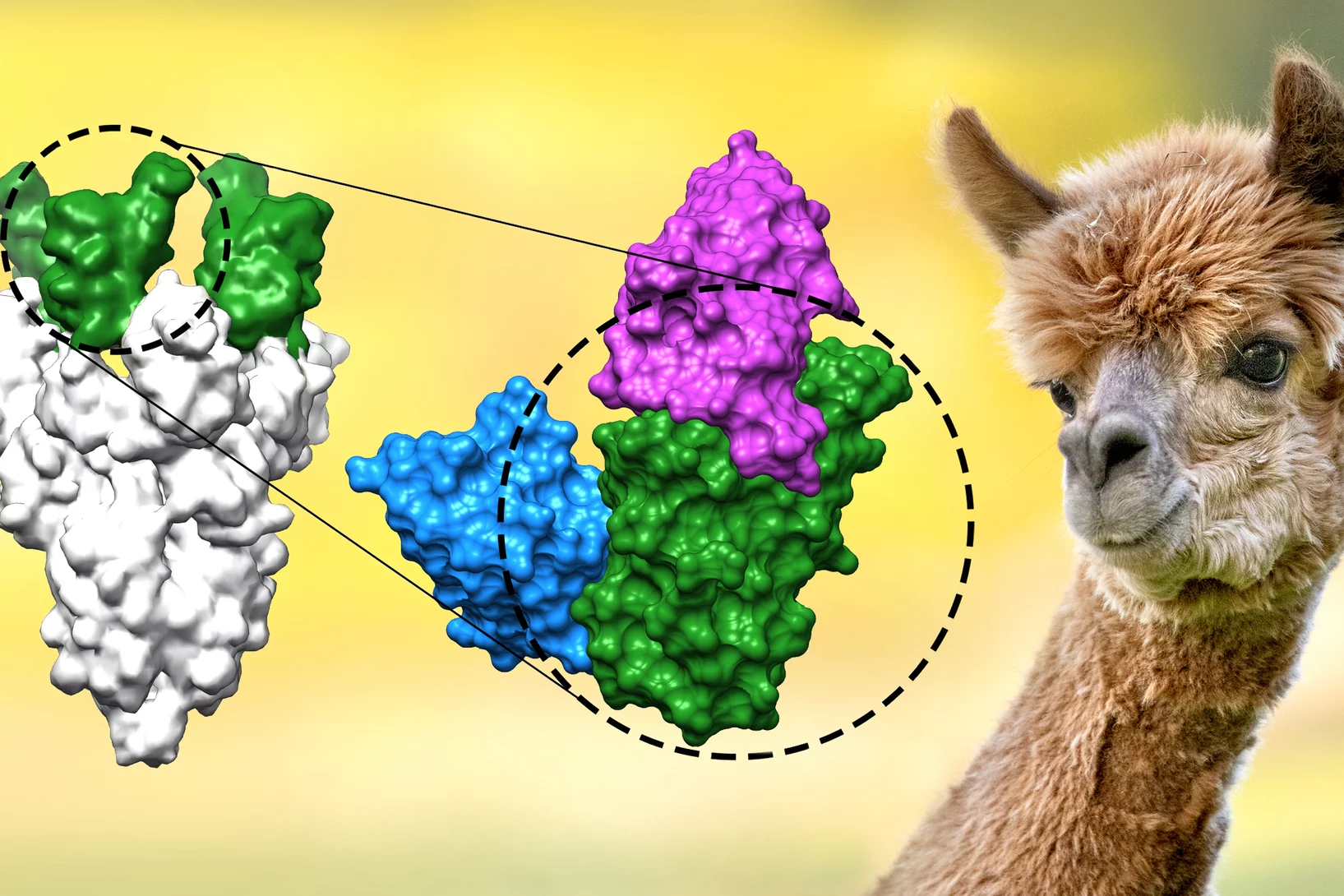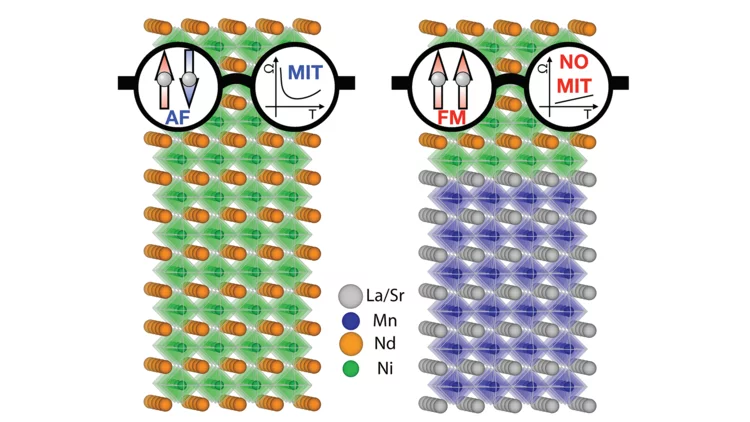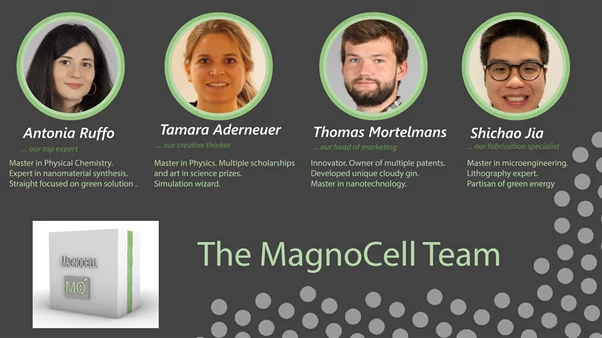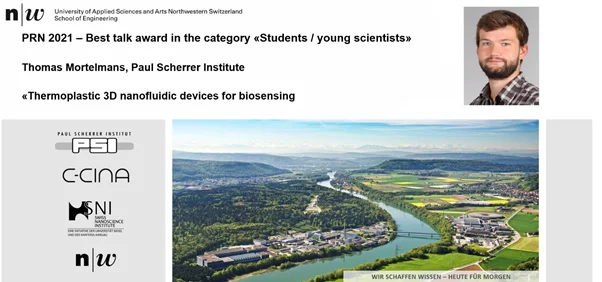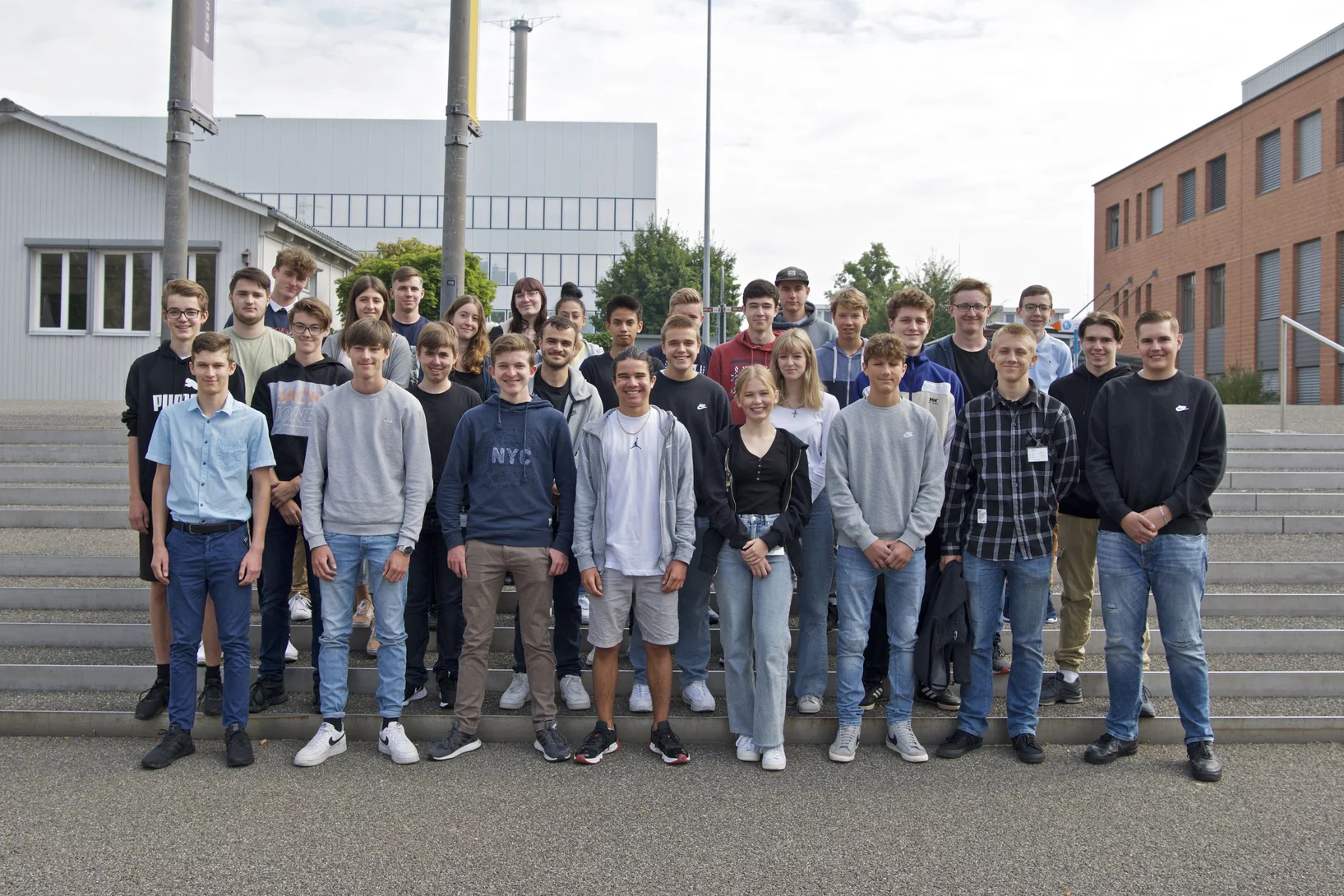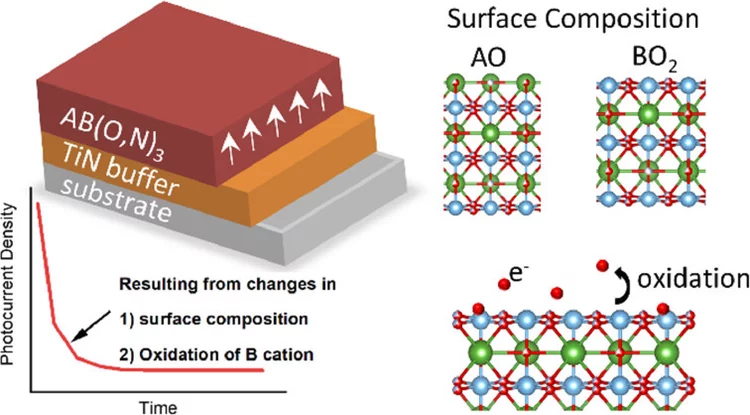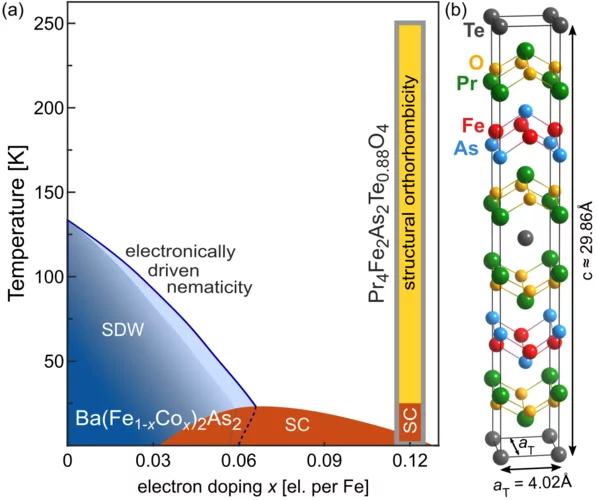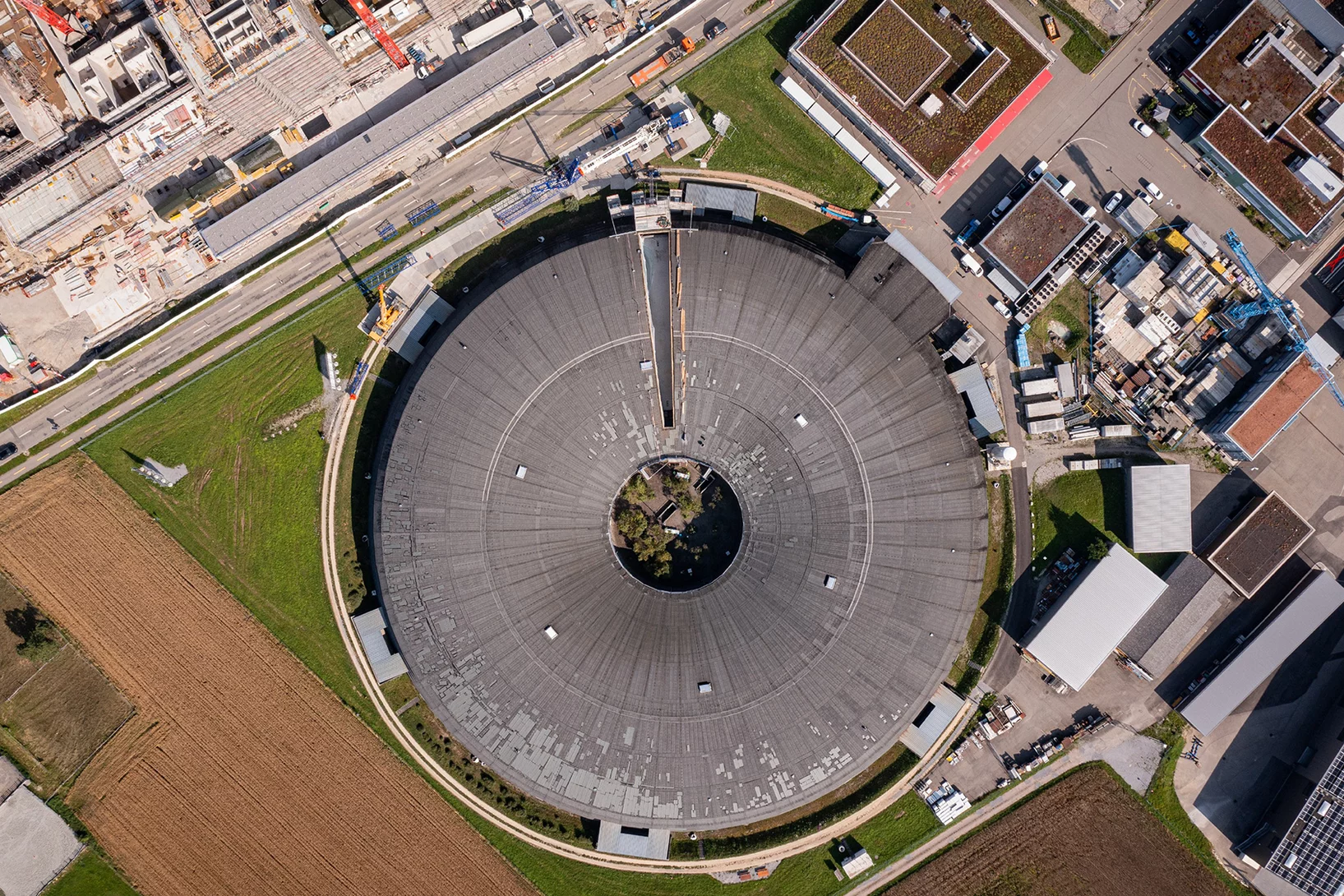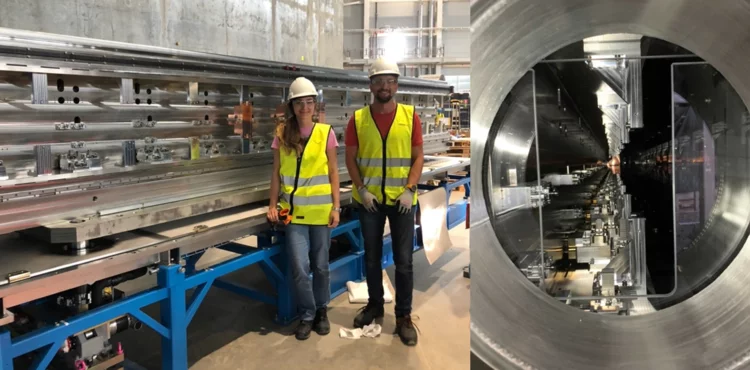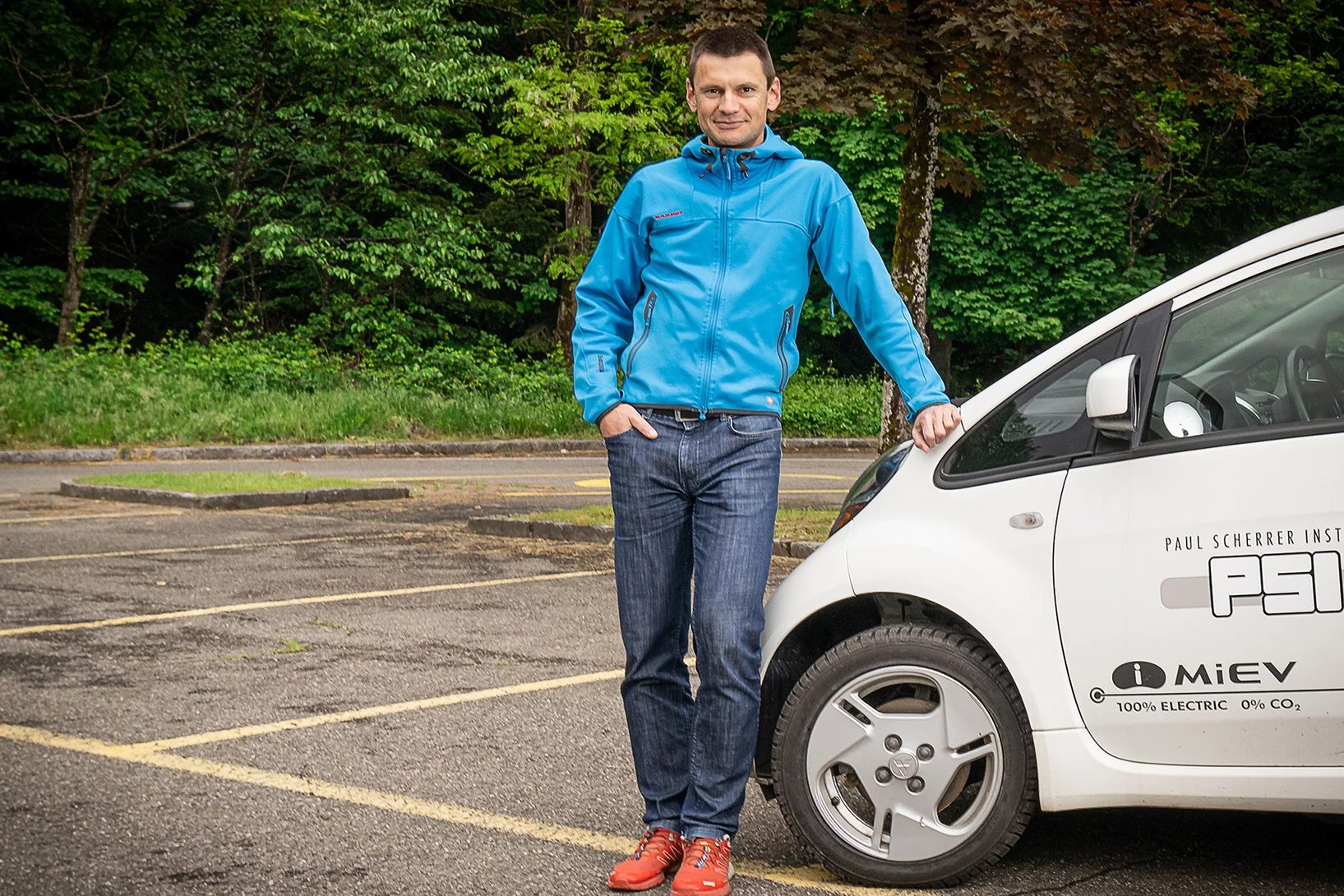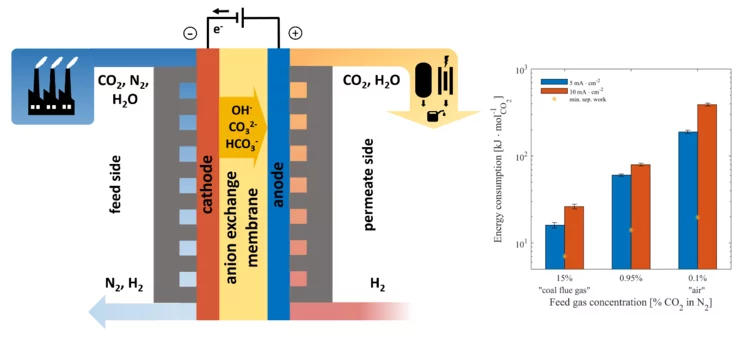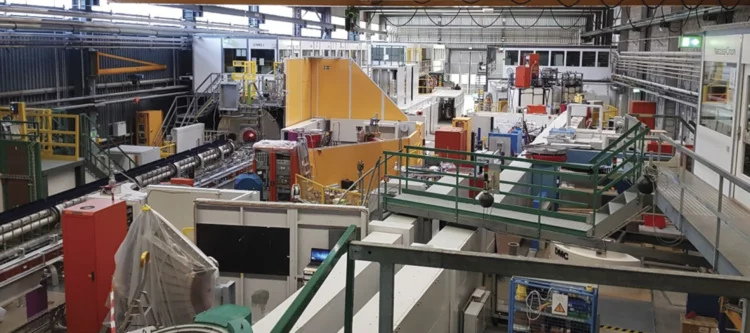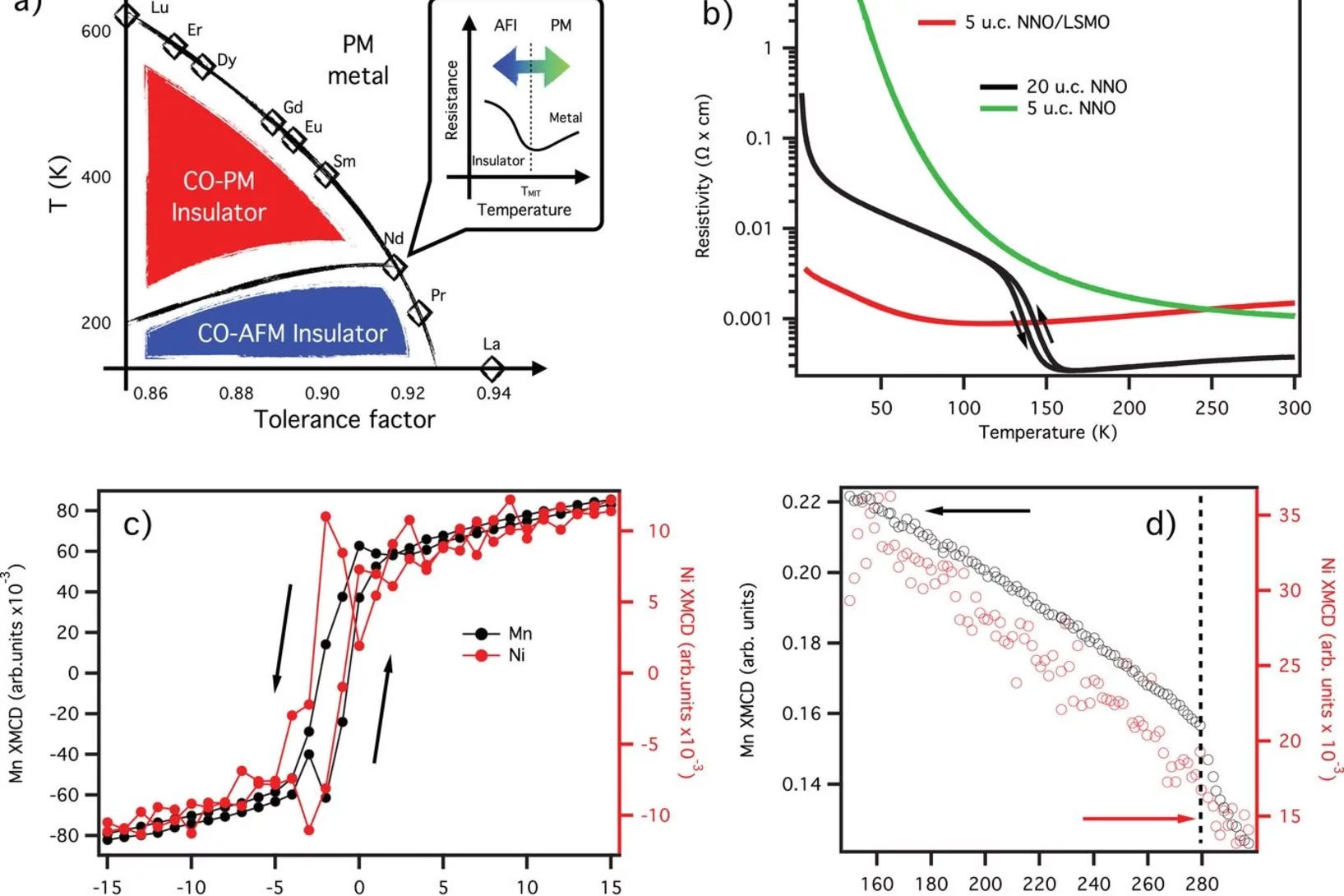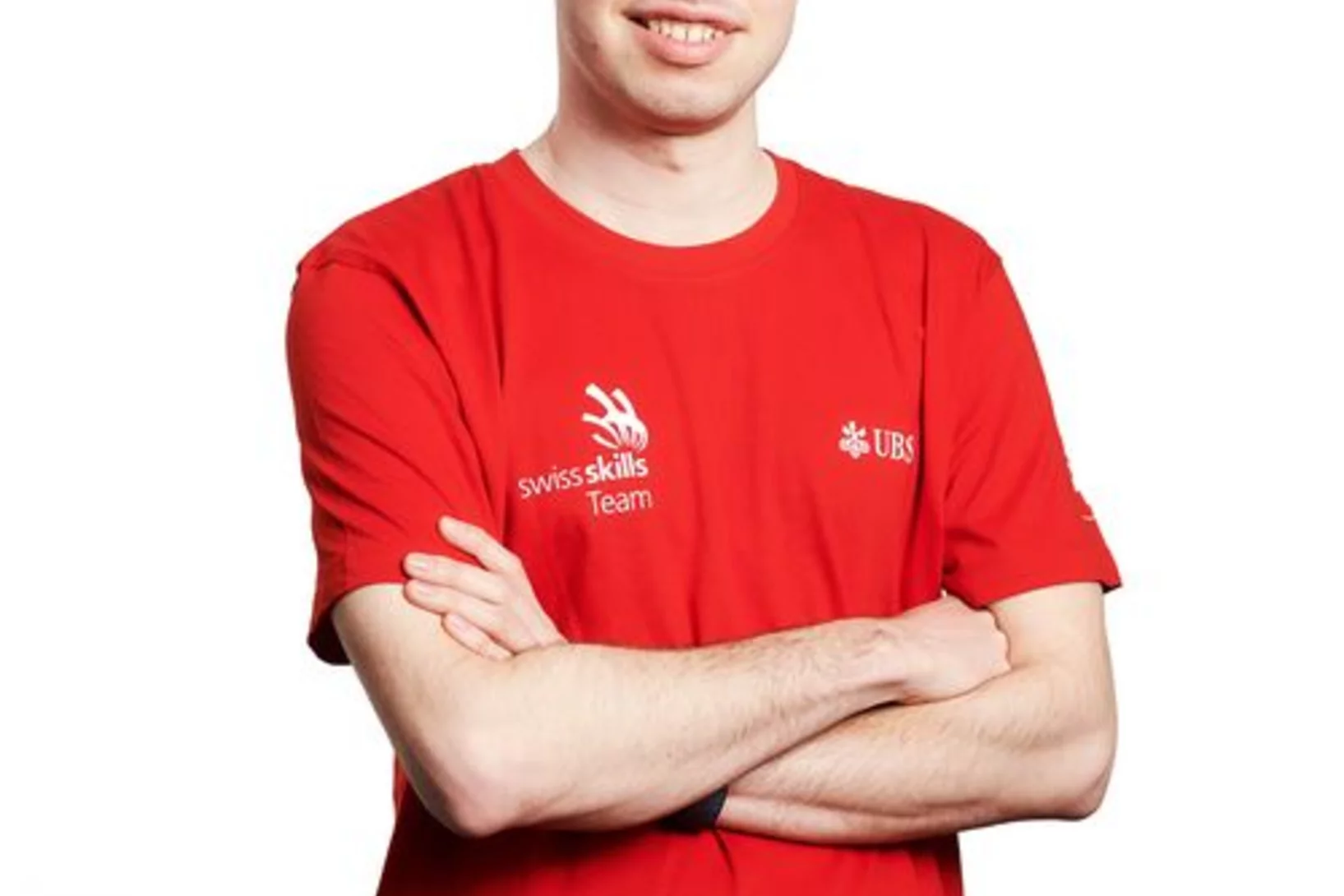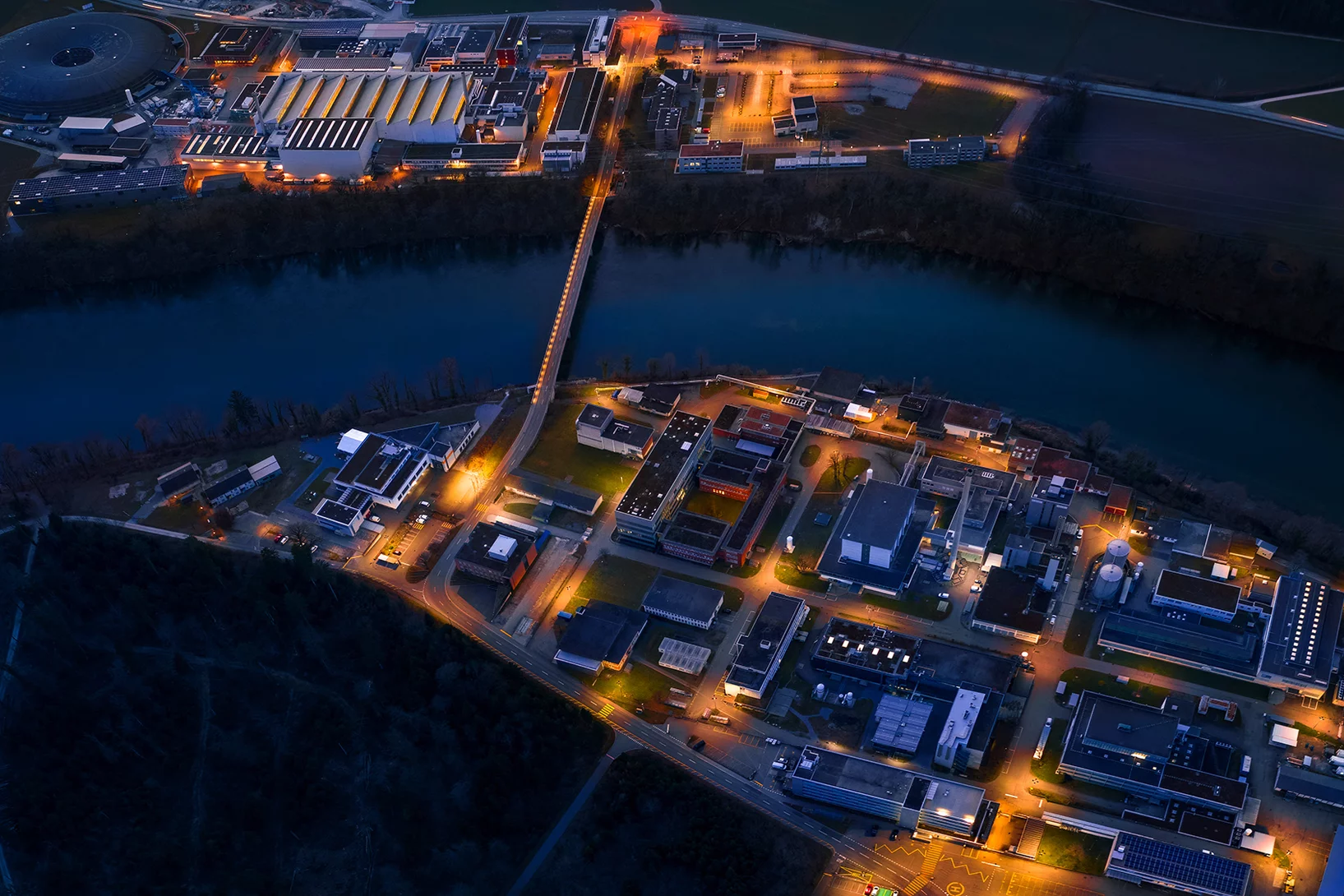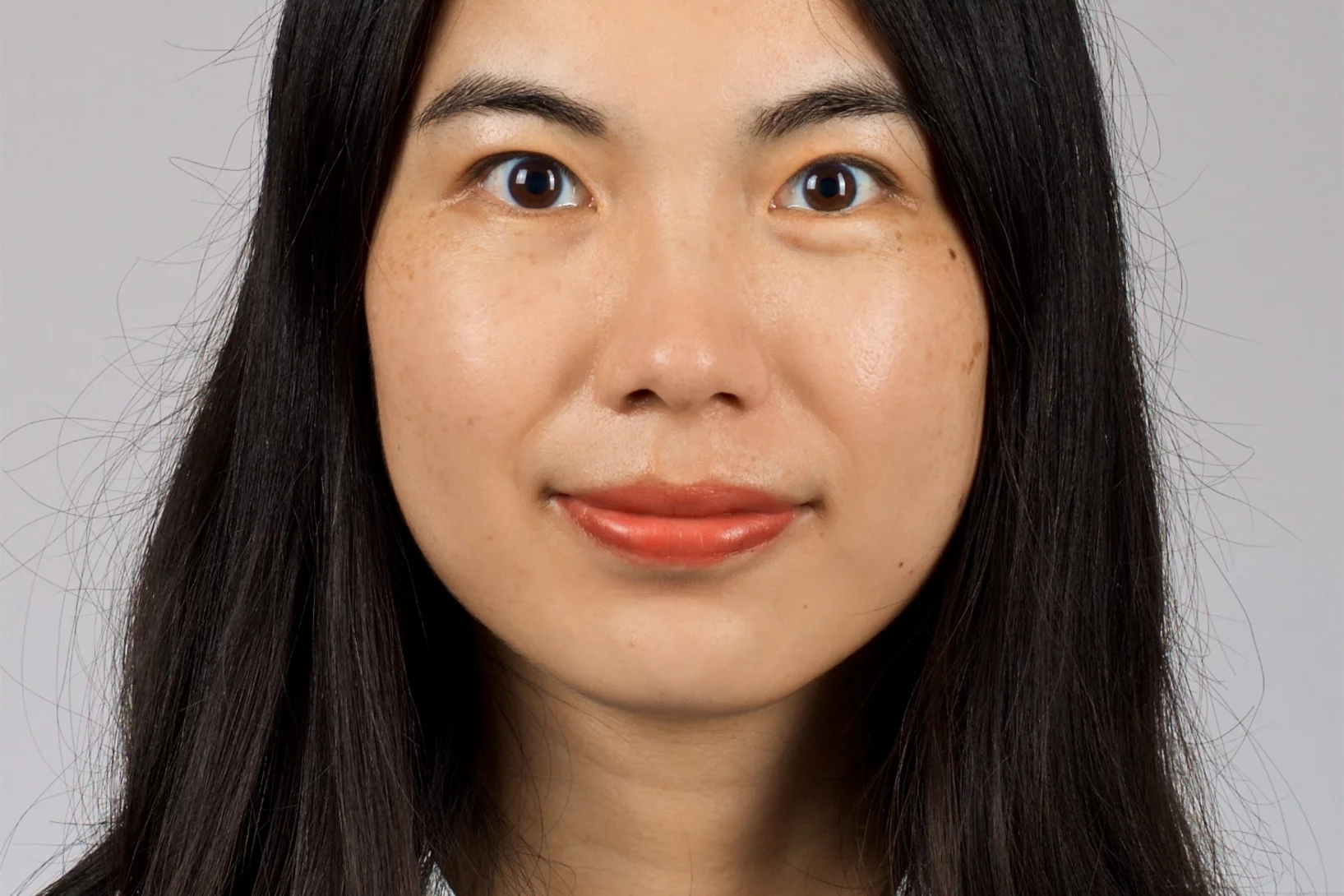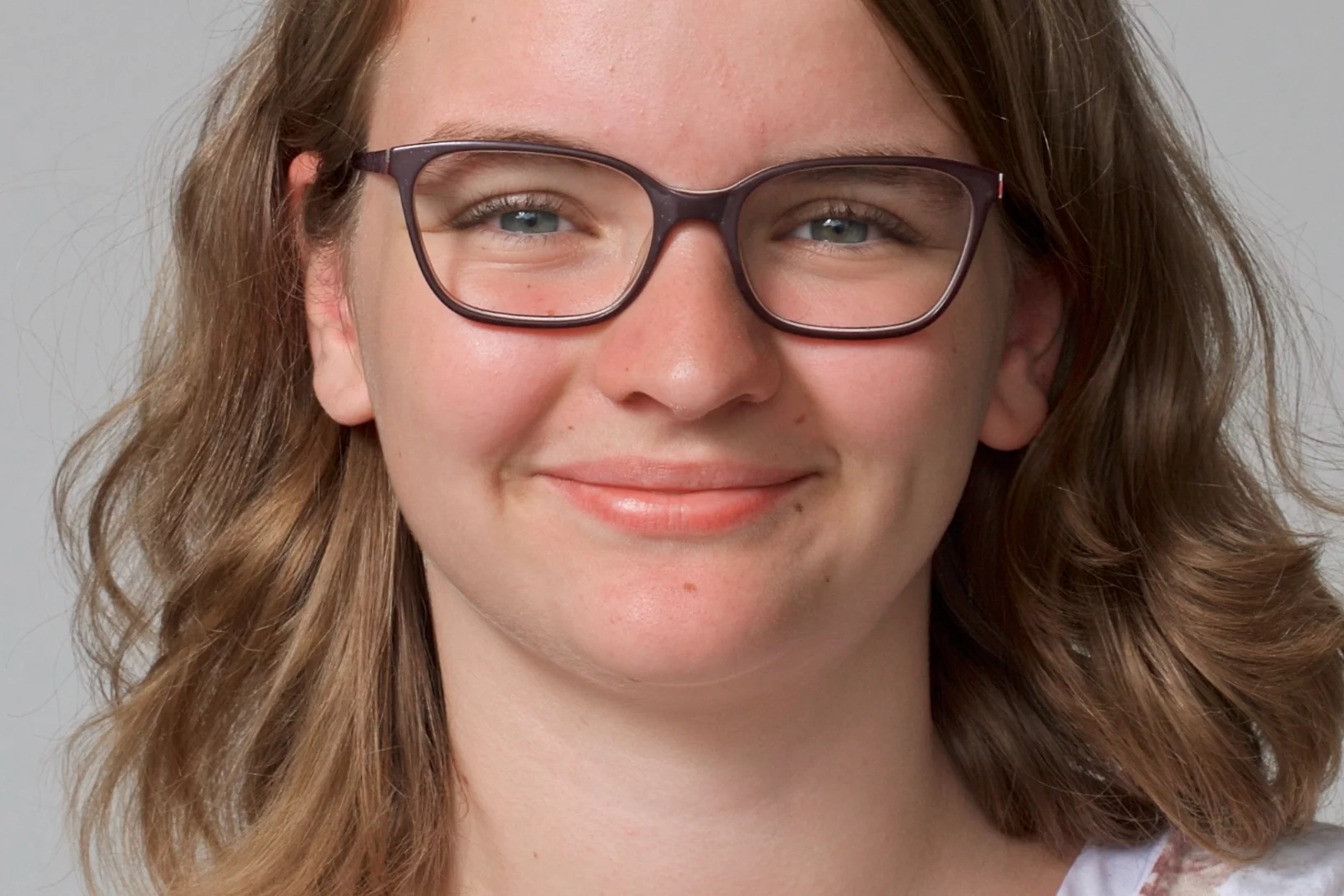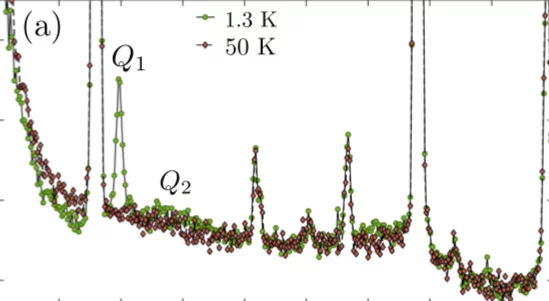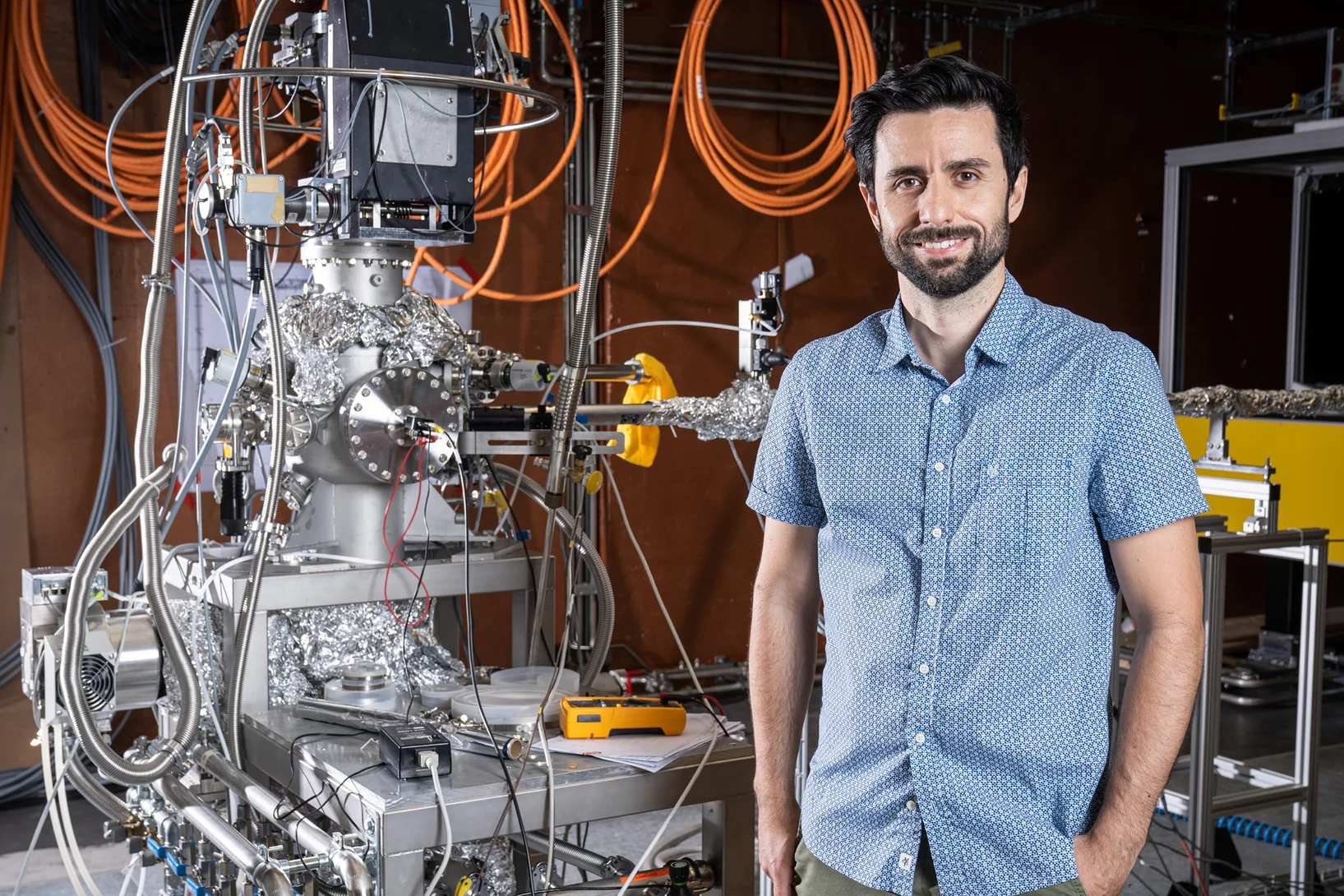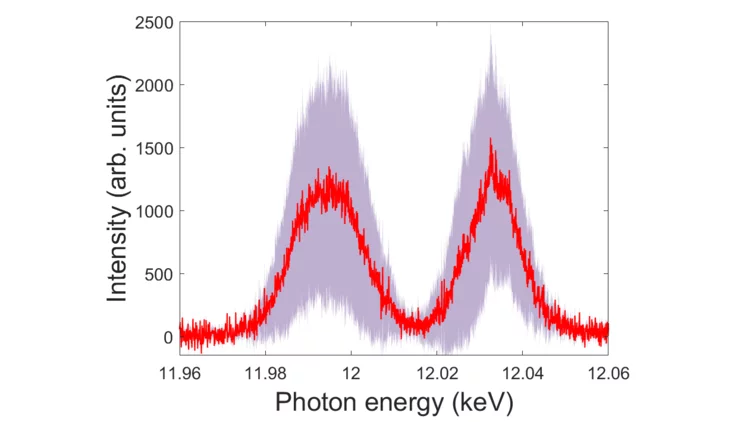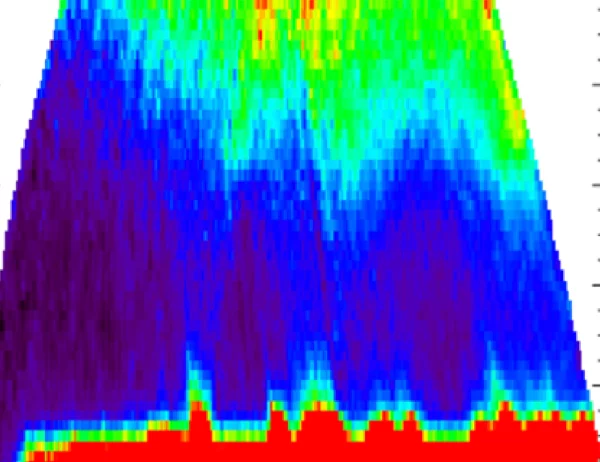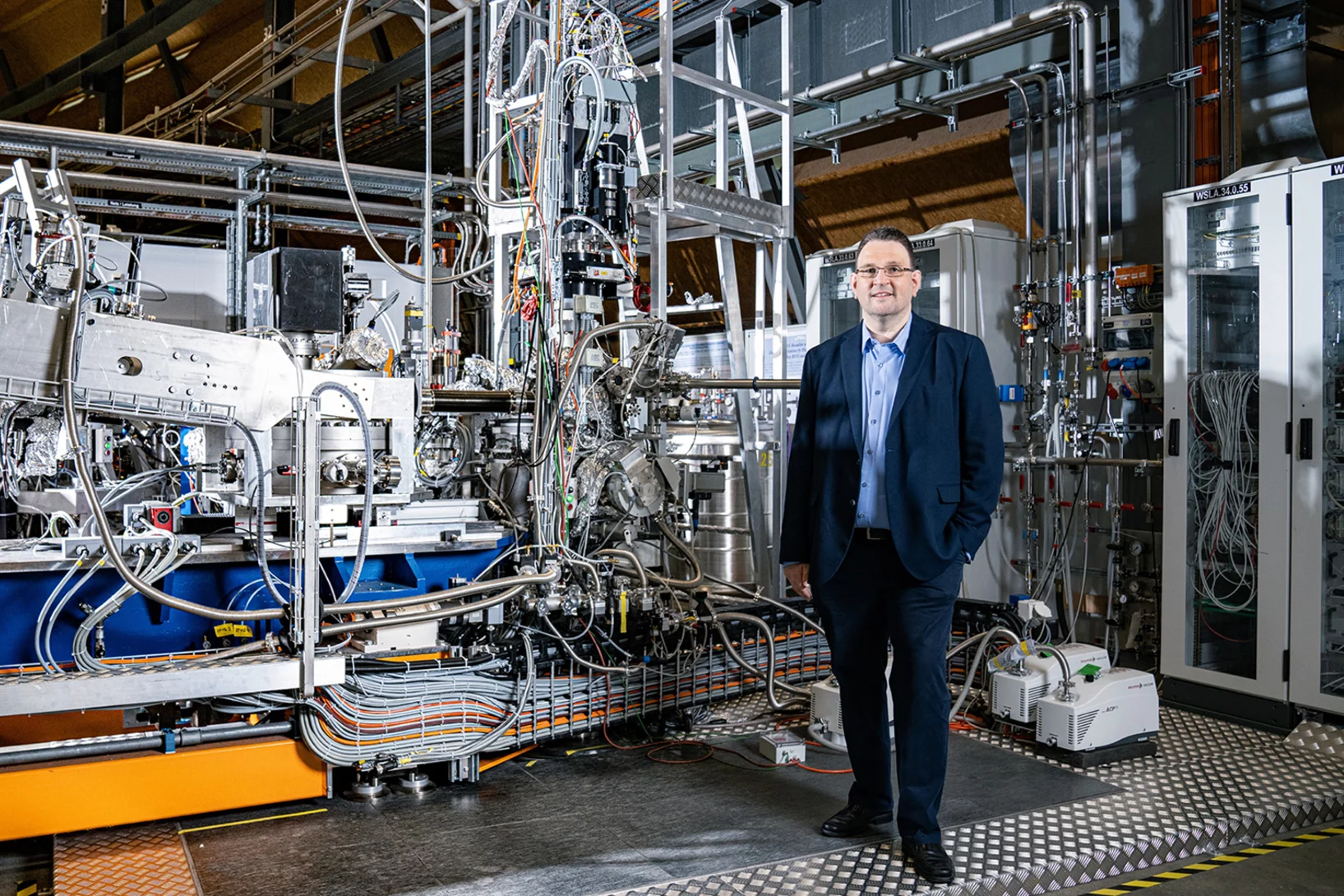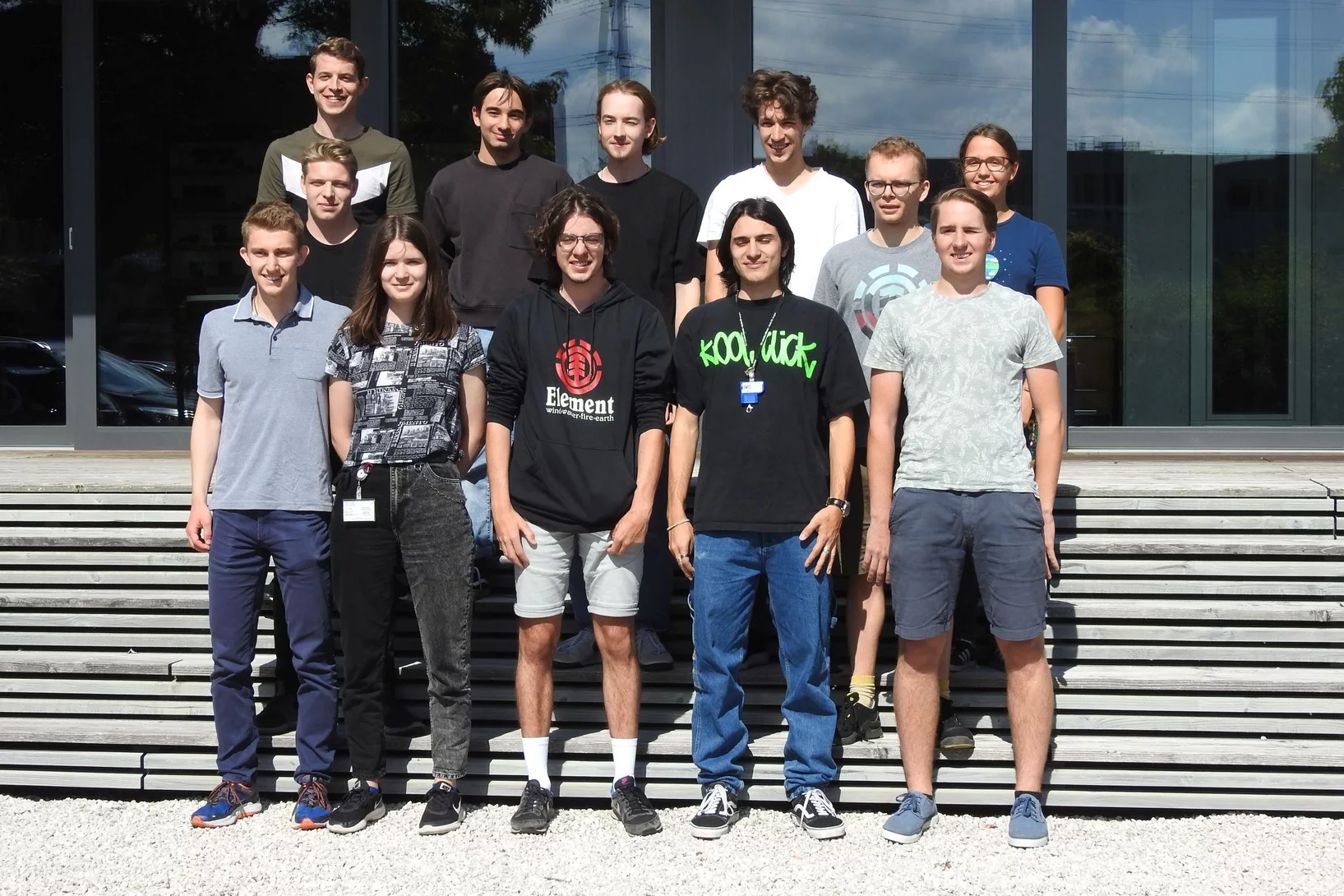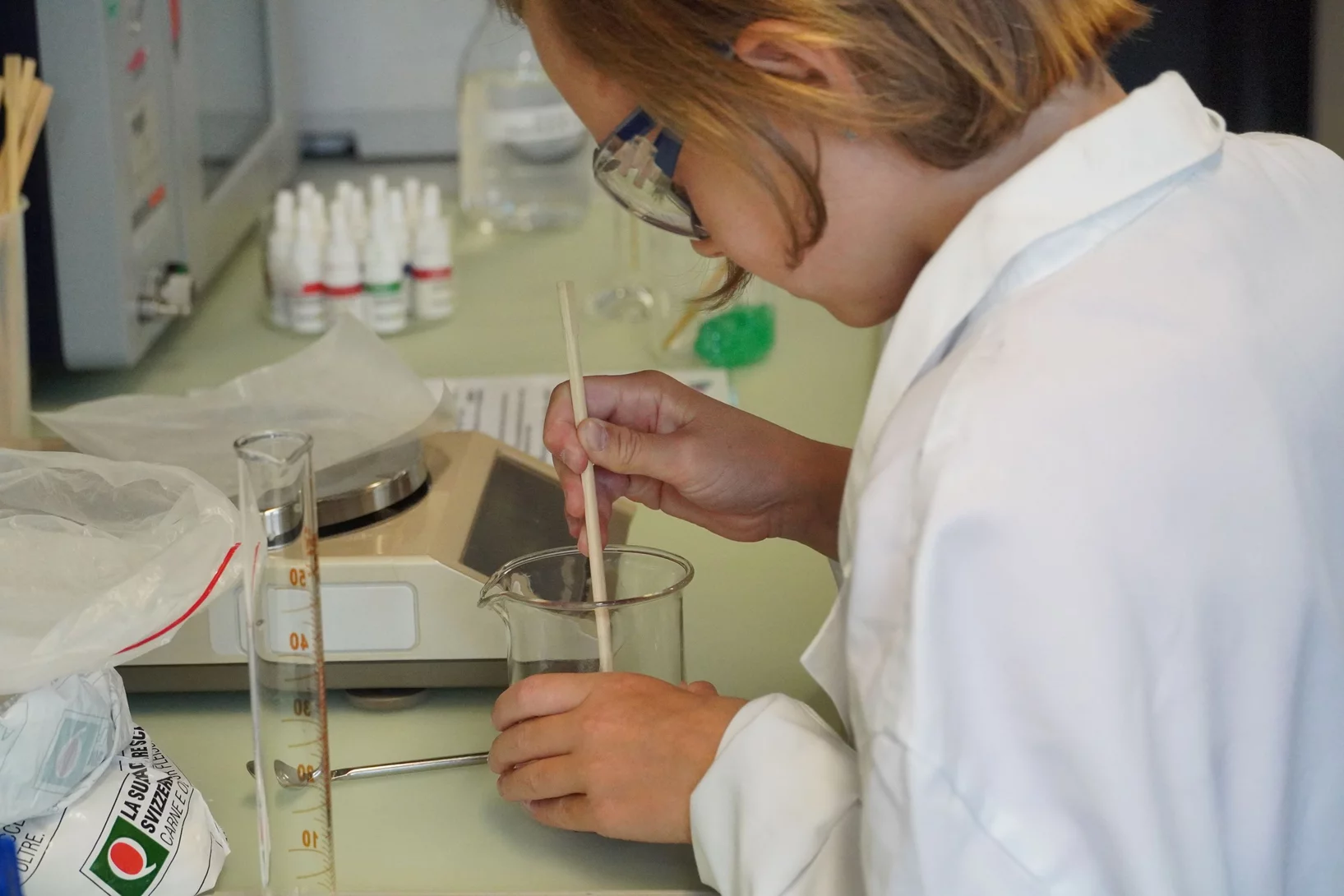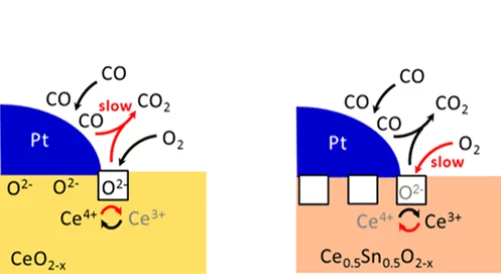Am Paul Scherrer Institut suchen Forschende nach Antworten auf die fundamentale Frage nach den Grundstrukturen der Materie und den fundamentalen Funktionsprinzipien in der Natur. Sie untersuchen Aufbau und Eigenschaften der Elementarteilchen – der kleinsten Bausteine der Materie – oder gehen der Frage nach, wie biologische Moleküle aufgebaut sind und wie sie ihre Funktion erfüllen. Das so gewonnene Wissen öffnet neue Lösungsansätze in Wissenschaft, Medizin oder Technologie.
Mehr dazu unter Überblick Grundlagen der Natur
Nanobodies against SARS-CoV-2
In a study published in EMBO Journal, researchers at the Max Planck Institute for Biophysical Chemistry, Göttingen, Germany, developed nanobodies that efficiently block the coronavirus SARS-CoV-2 and its variants. The high resolution structural characterization was performed at the X10SA crystallography beamline at the Swiss Light Source.
Creating novel quantum phases via the heterostructure engineering
Within this synergetic collaboration, PSI scientists have investigated the correlation between magnetic and electronic ordering in NdNiO3 by tuning its properties through proximity to a ferromagnetic manganite layer. The main outcome is that the stray magnetic field from the manganite layer causes a novel ferromagnetic-metallic (FM-M) phase in NNO. This work demonstrates the utilization of heterostructure engineering for creating novel quantum phases.
The MagnoCell Team
Performing PhD research is generally focused on answering key questions in basic sciences. However, sometimes, these projects find real-world applications. To do so, out-of-the- box thinking and innovation are crucial. To put these to the test, the Swiss Nanoscience Institute (SNI) of the University of Basel organized a workshop called: “Innovation Workshop: From Lab to Start-up” for SNI PhD students. During this workshop, the PhD students had the opportunity to develop ideas for a possible future start-up and present them in a short, but powerful pitch to convince potential investors. The three SNI students from the team Magnocell, including three from the Paul Scherrer Institute took part and were awarded first prize. The winning team was consisted out of: Thomas Mortelmans of the Laboratory of Micro-and Nanotechnology, Shichao Jia of the Laboratory of Nanoscale Biology and Antonia Ruffo of the Electrochemistry Laboratory and Tamara Aderneuer of CSEM Basel. Their idea was to create a company that has the potential to revolutionize modern fuel cells and could make an impact on a billion dollar landscape.
When Shichao was asked about his opinion concerning the workshop, he said the following:
‘In general, dissemination of the advances in basic sciences to the public is never easy. It is even more so in a business context where you would probably have to sell your scientific idea to potential investors. In my opinion, this workshop was deliberately organized to train and prepare us for such a scenario. While the scientific idea itself is undoubtedly essential for a science/engineering-driven start-up, the preparation for the pitch made me realize that it is equally important, if not more, to convey to the potential investor the public interest brought by our idea, our grasp of the target market and our vision for the growth of the start-up. Last but not least, it was so much fun to work with Antonia, Tamara and Thomas “against the clock”.’
PRN 2021 Best talk award
At the end of May 2021, the Fachhochschule Nordwerstschweiz hosted the Polymer Replication on Nanoscale conference (prn-conference.com/program). The conference aims to provide an up-to-date overview on the state of the art and newest findings in R&D on polymer replication on the micro- and nanoscale. The virtual conference was attended by members from both academia as well as industry. Here, Thomas Mortelmans, PhD-student in the Laboratory of Micro-and Nanotechnology, had the honor to give an invited talk entitled: Thermoplastic 3D nanofluidic devices for biosensing. The presentation explained how different nanofabrication methods can be simultaneously used to achieve 3D nanoscale topography control in a cost-effective and up scalable manner. At the end of the conference, Thomas was awarded with the best talk award in the category of young scientists.
Lehrabschlussfeier 2021
Am Freitag, 13. August 2021 konnten wir den schönen Sommerabend nützen, um unsere neuen Berufsleute mit der Lehrabschlussfeier zu verabschieden. Erneut erreichten sie einen tollen Noten-Durchschnitt und eine sensationelle Höchstnote von 5.9. Wir sind sehr stolz auf sie und gratulieren ganz herzlich. Karsten Bugmann (Leiter Personalmanagement) führte gekonnt durch den Abend. David S. präsentierte uns seine Erfahrungen an den SwissSkills und Alex Amato (Bereichsleiter a.i. NUM) erklärte uns auf charmante Weise was wichtig ist im Leben und übergab die Fähigkeitsausweise! Das wunderbare Essen und der tolle Service des Oase-Teams rundeten den schönen Abend ab.
Einführungswoche 2021
Wir begrüssen 30 neue Lernende, Praktikantinnen und Praktikanten
Surface Analysis of Perovskite Oxynitride Thin Films as Photoelectrodes for Solar Water Splitting
Perovskite oxynitride semiconductors have attracted huge interest recently as promising photoelectrode materials for photoelectrochemical (PEC) water splitting. Oxynitride thin films grown by physical vapor deposition are ideal model systems to study the fundamental physical and chemical properties of the surface of these materials, including their evolution. Using a combination of high-sensitivity low-energy ion scattering (LEIS) and X-ray photoelectron spectroscopy (XPS), the surface evolution of LaTiOxNy (LTON) and CaNbOxNy (CNON) thin films before and after the PEC characterizations is monitored. This work provides therefore insight into the surface characteristics and evolution of LTON and CNON oxynitride thin films as photoelectrodes for PEC applications.
Novel structural orthorhombicity in an iron-pnictide superconductor
Researchers from University of Zurich describe the experimental observation of a new orthorhombic structural phase in the superconducting iron-pnictide compound Pr4Fe2As2Te0.88O4. In contrast to nematicity found in underdoped iron pnictides this phase transition is not electronically driven.
SLS: Der neue Kran kommt von oben
Die Synchrotron Lichtquelle Schweiz SLS bekommt einen zweiten Hallenkran. Aber wie schafft der es ins Gebäude? Da bleibt nur der Weg durch das Dach.
First Components of ESTIA arrive at ESS in Lund
The European Spallation Source (ESS) is currently under construction in Lund, Sweden and is set to become the most powerful neutron source in Europe and world-wide. The PSI-ESS project is delivering state-of-the-art contributions to five instruments at ESS, which will be home to a suite of 15 novel instruments. Among the five PSI instruments, the reflectometer ESTIA stands out as it is delivered in its entirety by PSI ...
Prof. Dr. Roger Schibli has been elected a Council Member 2020-2022 of the European Society for Molecular Imaging - ESMI
European Society for Molecular Imaging - ESMI
The ESMI represents and advocates IMAGING SCIENCE
The ESMI is providing an international, interdisciplinary platform for knowledge exchange in the field covering basic sciences, translational aspects as well as clinical applications.
Kohlendioxid effektiv aus der Atmosphäre entfernen
Bei sorgfältiger Planung ist CO2-Abscheidung technisch effektiv möglich.
An electrochemical membrane processes for CO2 capture
CO2 capture from dilute gas mixtures (e.g., combustion flue gases, air) is increasingly recognized as a critical technological pathway towards stemming catastrophic climate change. Conventional thermal-based processes for removing CO2 from flue gas (e.g., amine scrubbing) are energy intensive and significantly reduce power plant efficiency. Electrochemical separation approaches have the potential to reduce these power requirements considerably by using electrons to transport CO2 as (bi)-carbonate ions across an alkaline membrane.
SINQ - performance of the new neutron guide system
In a recent open access article in "Neutron News" the performance of the new neutron delivery system after the SINQ upgrade has been described. Neutron flux gain factors between 2 and more than 10 have been measured at the various cold neutron instruments at SINQ.....
Proximity-Induced Novel Ferromagnetism Accompanied with Resolute Metallicity in NdNiO3 Heterostructure
Employing X-ray magnetic circular dichroism (XMCD), angle-resolved photoemission spectroscopy (ARPES), and momentum-resolved density fluctuation (MRDF) theory, the magnetic and electronic properties of ultrathin NdNiO3 (NNO) film in proximity to ferromagnetic (FM) La0.67Sr0.33MnO3 (LSMO) layer are investigated. The experimental data shows the direct magnetic coupling between the nickelate film and the manganite layer which causes an unusual ferromagnetic (FM) phase in NNO. Moreover, it is shown the metal–insulator transition in the NNO layer, identified by an abrupt suppression of ARPES spectral weight near the Fermi level (EF), is absent. This observation suggests that the insulating AFM ground state is quenched in proximity to the FM layer. Combining the experimental data (XMCD and AREPS) with the momentum-resolved density fluctuation calculation (MRDF) reveals a direct link between the MIT and the magnetic orders in NNO systems. This work demonstrates that the proximity layer order can be broadly used to modify physical properties and enrich the phase diagram of RENiO3 (RE = rare-earth element).
EuroSkills 2021 in Graz
Mario Liechti kämpft nun auf internationaler Ebene um Medaillen
Das PSI bei Nacht
Künstliches Licht, eigentümlicher Glanz: fünf Bilder zeigen das PSI bei Nacht.
Welcome Aboard!
We are happy to welcome Lu Liu in our Laboratory.
Dr. Lu Liu is a Postdoctoral Researcher, who has recently joined the group of Isotope and Target Chemistry. She will work on the “PASCAL” project, under the supervision of Dr. Jörg Neuhausen.
Welcome to Céline Blétry
We warmly welcome Céline Blétry in the Laboratory of Environmental Chemistry. She joined the Surface Chemistry group on August 9, 2021 as apprentice.
Magnetic correlations in the triangular antiferromagnet FeGa2S4
The crystal structure and magnetic correlations in triangular antiferromagnet FeGa2S4 are studied by x-ray diffraction, magnetic susceptibility, neutron diffraction, and neutron inelastic scattering. We report significant mixing at the cation sites and disentangle magnetic properties dominated by major and minor magnetic sites.
Erstes Licht an Furka: Die Experimente können beginnen
Der Weg zu weltweit einzigartigen Experimenten ist frei.
Two-color x-ray free-electron laser by photocathode laser emittance spoiler
A novel and noninvasive method for high-energy two-color x-ray FEL emission was demonstrated at SwissFEL. In the experiment, a laser emittance spoiler pulse is overlapped with the primary photocathode laser pulse to locally spoil the beam emittance and inhibit the FEL emission from the central part of the beam, ultimately resulting in X-ray emission at two wavelengths. High spectral stability and the possibility to independently control the duration and intensity ratio between the two-color X-ray pulses is demonstrated. The laser emittance spoiler also enables shot-to-shot selection between one and two-color FEL emission and further, as it does not contribute to beam losses, it is compatible with high repetition-rate FELs.
This article has been selected as the winner of the first Ernest Courant Outstanding Paper Recognition, a honor sponsored by the journal Physical Review Accelerators and Beams (PRAB) and the APS Division of Physics of Beams (DPB). This honor recognizes the most outstanding paper published in PRAB annually.
Welcome to Alessia Cesarini
Welcome to Alessia Cesarini, new PhD student in the van Bokhoven group. She is located at EMPA and works together with Andreas Borgschulte.
Geheimnis der Stradivari-Geigen enthüllt
Wie ein internationales Team von Forschenden herausfand, griffen die alten italienischen Meister Stradivari und Guarneri beim Geigenbau zu unerwarteten chemischen Hilfsmitteln.
Soft-mode dynamics in the ferroelectric phase transition of GeTe
GeTe that exhibits a strong anharmonicity and a ferroelectric phase transition between the rhombohedral and cubic structures has emerged as one of the leading thermoelectric materials. Herein, combining molecular dynamics simulations and inelastic neutron scattering measurements, the lattice dynamics in GeTe have been investigated to reveal the soft-mode mechanisms across the phase transition.
Die Physik in neuen Metallen verstehen
Forschende des PSI könnten gemeinsam mit internationalen Kollegen nun korrelierte Metalle für die Anwendung in der Supraleitung, Datenverarbeitung oder in Quantencomputern nutzbar gemacht haben.
Lehrlingsevent Gewerbeverein 2021
Da der Lehrlingsevent des Gewerbevereins Aaretal-Kirchspiel auch dieses Jahr nicht im üblichen Rahmen stattfinden konnte, haben Vertreter der Zurzibieter Gewerbevereine die Lehrabgänger mit einem Besuch und einem Geschenk überrascht.
Feriencamp 2021
Auch dieses Jahr konnten wir mit 36 Kinder von PSI-Mitarbeitenden das Feriencamp durchführen. Wir verbrachten eine interessante und tolle Woche am PSI. Herzlichen Dank allen Helfenden, welche diese Woche überhaupt möglich machen!
Enhanced Reducibility of the Ceria-Tin Oxide Solid Solution Modifies the CO Oxidation Mechanism at the Platinum-Oxide Interface
The introduction of tin into ceria strongly influences its reducibility. In turn, the reaction mechanism towards the oxidation of carbon monoxide changes: the oxidation rate increases, the apparent activation energy decreases and the reaction order in oxygen increases.
Full-field X-ray absorption tomography reveals the chemical structure of defects in metal-organic frameworks
Cryo-full-field XANES computed tomography was used to visualize the presence and distribution of a second coordination polymer of reduced copper coordination within defect-engineered HKUST-1 MOF crystals. Observations encourage a revisitation of the structure-property relationships of defect-engineered MOFs.

